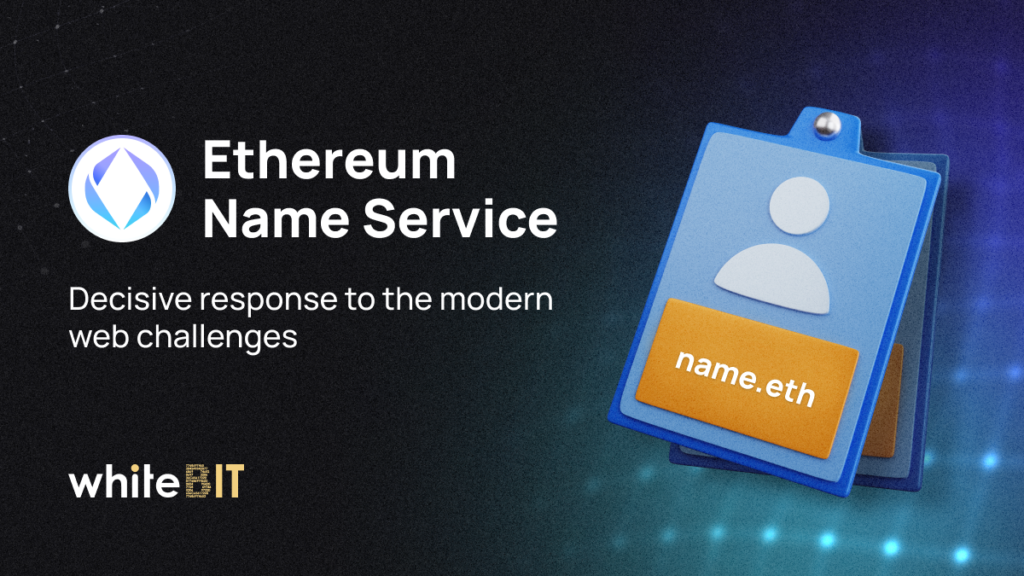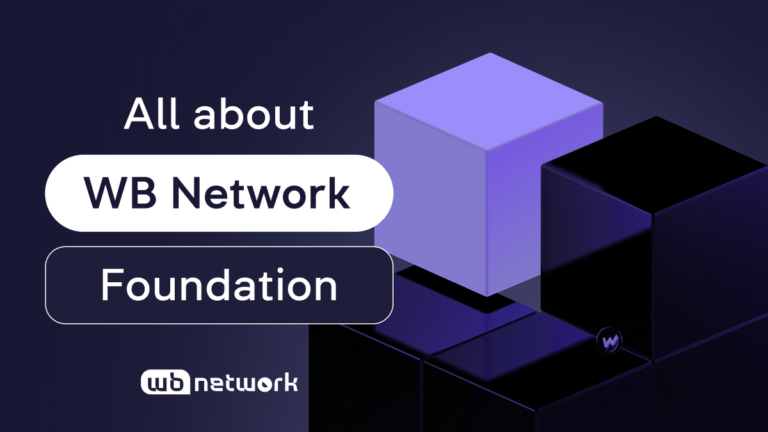ENS: Decentralized Domain Name System of the Web3 Generation

Content
The system that made it possible to search and quickly find the right website in the global network is celebrating its 39th anniversary this year. We are talking about DNS (Decentralized Name System) – a registry that converts a hostname into an IP address and matches your search queries with the sites you need. At one time, the technology significantly facilitated the search for pages on the Internet, freeing World Wide Web users from the need to remember long digital combinations. Instead, we can simply enter the name of the platform we need and immediately see it at the top of our browser search.
However, technology does not stand still, and with the advent of decentralized websites, blockchain, and data privacy concerns, a new domain name storage system, ENS, appeared on the lips of the tech elite today. Let’s compare two revolutionary inventions, discuss the prospects of using ENS, and unravel the main reasons for the popularity of the alternative registry system.
How does the DNS system work?
The functioning of DNS is similar to the mechanism that allows our phone to call a desired contact from the phone book. To make a call, we don’t need to enter numbers every time; it is enough just to enter the contact’s name.
DNS works the same way. Each website has its unique code, an IP address. However, we don’t need to specify it every time we do a search. All we need to do is specify the site’s name associated with this IP address, and the computer will already request the DNS registry to find the desired page.
So, the DNS server is a kind of contact book of the Internet, which stores the IP addresses of various sites. There are many servers running on different providers.
Vulnerabilities of DNS
The number of web platforms that store users’ personal information and even their financial data has significantly increased over the past few years, and so has the number of attacks on the integrity of the DNS servers. Thus, attacks on DNS can be conditionally divided into two categories:
- Attacks on DNS vulnerabilities make it impossible for users to access the desired page. Instead, the user is redirected to the attackers’ website. As a result of the user switching to the wrong IP address, Internet criminals can gain access to their data.
- DDoS attacks paralyze the DNS server. As a result, the user’s computer cannot get the required IP address from DNS due to its overload, and therefore it becomes impossible for the user to open the needed website.
Low performance and insufficient bandwidth are the Achilles heel of DNS servers.
A recent fishing attack on the Curve Finance DeFi protocol illustrates the problem quite well. As a result, the protocol users lost a total of $573,000. Analysts claim that the infrastructure of the service and the provider itself were not affected, but the attackers conducted an effective attack on the DNS protocol. The project warned users not to use the platform for some time and offered to switch the protocol to a new domain. The incident prompted Curve Finance representatives to note the need to move from vulnerable DNS to a more decentralized ENS system.
What is ENS?
New times require new solutions. ENS (Ethereum Name Service) is a distributed domain address registry system running on the Ethereum blockchain. In essence, ENS is analogous to its predecessor, DNS, with improved architecture and resistance to attacks. The main difference between ENS and DNS is that ENS stores addresses in the blockchain, replacing the manual system with a smart contract.
The number of registrations in the Ethereum Name Service domain name system is rapidly growing. It keeps pace with the development of IPFS (InterPlanetary File System), an open-source communication protocol that allows peer nodes to store data in a single file distribution system. IPFS is great for storing important information and creating static sites.
Therefore, creating Web3 platforms using the IPFS protocol and registering the domain in the ENS is an excellent measure to protect the data of these platforms from potential attacks. Arguments in favor of the synergy of IPFS and ENS are resistance to censorship, high throughput, reduced node load, and the theoretical possibility of saving data in IPFS forever.
ENS vision: how does ENS work?
Ethereum Name Service has a hierarchical structure, which allows domain owners to create subdomains. Resistance to ENS censorship is ensured by the use of smart contracts, which can be divided into two main types:
- Registrar – a contract that controls the registration of domains and stores information about their owners in the blockchain.
- Resolver – a contract that uses hashing to transform the domain owner’s blockchain address into a readable format and matches domains with information about their owners.
ENS is an innovative solution for a number of operations that can now be carried out on the blockchain:
- create decentralized names for wallets, thanks to which you can group your addresses under one ENS name;
- run censorship-resistant decentralized sites on IPFS with ENS-name;
- import DNS name to ENS and much more.
ENS perspectives
The numbers speak for themselves: during July alone, the number of registered domains in ENS increased by 378,000. As of August 2022, the total number of registrations reaches 1.87 million. According to statistics, a lot of attention is drawn to the project from the non-English-speaking population, in particular, from users who speak Spanish and Arabic.
This popularity is primarily associated with the approach of The Merge update, scheduled for the 19th of September, which will allow Ethereum to migrate to the PoS algorithm. In addition, as the director of ENS Domains notes, users are attracted by the product’s healthy ecosystem and community-shared ideas.
ENS token
Ethereum Name Service is a decentralized protocol not subject to a central authority but managed by the DAO. Accordingly, the ENS DAO has its own governance token, which allows its owners to participate in the organization’s decision-making and initiate their own proposals for improvement. You need to hold at least 100,000 ENS to vote for your proposals. The total number of ENS is 100 million.
How to buy ENS? Of course, the ENS token can be found on our exchange. The asset is paired against USDT.
Let’s summarize
Finding anything in the Internet archives would be challenging if it weren’t for the DNS and ENS systems. ENS is a domain address distribution system that runs on Ethereum and allows creating unique decentralized names for sites or cryptocurrency wallets and combining decentralized domains with traditional ones. Due to its decentralized nature, ENS promotes better security, censorship resistance, and longevity of its domains.








